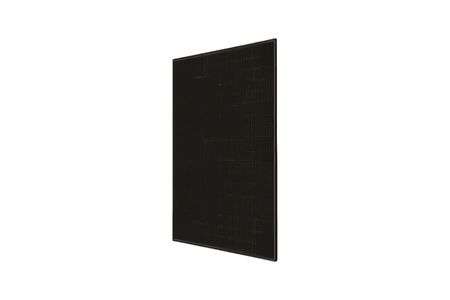RenewSolar Stock and sell Bifacial Solar panels. Free Delivery*
Bifacial Solar Panels: A Double-Sided Solution for Power Generation
What are Bifacial Solar Panels?
Unlike traditional (monofacial) solar panels that only capture sunlight on one side, bifacial panels have solar cells on both sides. This innovative design allows them to harness energy from both the front, where sunlight directly hits, and the back, where reflected light can also be converted into electricity.
The Advantages of Bifacial Solar Panels
- Increased Energy Production: The ability to capture sunlight from both sides results in significantly higher energy output compared to monofacial panels. Depending on the installation conditions, bifacial panels can generate up to 30% more electricity.
- Land Efficiency: With higher energy output, you can generate the same amount of electricity using fewer panels, making better use of available space. This is particularly beneficial for large-scale solar farms where land is a premium.
- Improved Performance in Various Conditions: Bifacial panels can still generate electricity even on cloudy days or when sunlight is reflected off snow or water, making them more reliable in different weather conditions.
- Durability: Many bifacial panels are made with glass on both sides, enhancing their durability and resistance to harsh weather conditions.
Use Cases for Bifacial Solar Panels
- Large-scale Solar Farms: Due to their higher efficiency and land-saving benefits, bifacial panels are ideal for utility-scale solar power plants.
- Commercial Installations: Businesses can benefit from increased energy production and potential cost savings by adopting bifacial technology.
- Residential Applications: While primarily used in commercial and utility-scale projects, bifacial panels can also be installed on residential rooftops, especially in areas with high reflectivity, such as those with light-colored roofs or nearby reflective surfaces.
- Floating Solar Farms: Bifacial panels are particularly well-suited for floating solar installations on water bodies, as the reflected light from the water surface significantly boosts energy production.
Bifacial vs. Monofacial Solar Panels
| Feature | Bifacial Solar Panels | Monofacial Solar Panels |
|---|---|---|
| Energy Production | Higher due to capturing light from both sides | Lower as only one side captures sunlight |
| Land Efficiency | More efficient use of land | Requires more space for the same energy output |
| Performance in Various Conditions | Generally better, especially in reflective environments | Can be affected by shading and low light conditions |
| Cost | Typically higher upfront cost but with potential long-term savings | Lower initial cost but lower energy output |
Conclusion
Bifacial solar panels represent a significant advancement in solar technology, offering increased efficiency, land savings, and improved performance compared to traditional panels. While they may have a higher upfront cost, the long-term benefits and potential energy savings make them a compelling option for various applications, especially in large-scale projects. As the technology continues to develop and become more affordable, bifacial panels are likely to play an increasingly important role in the transition to clean and renewable energy sources.
bifacial Solar panel 440w — RenewSolar category

No responses yet